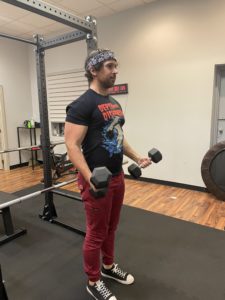At the end of August, I threw out a Challenge to my audience that I was hosting an 8 Week Tone Up Challenge designed to help people build muscle, trim fat, and gain strength, energy, and confidence in themselves.
Fast forward 8 weeks later and Ben B completed the challenge checking off each of those marks off his list.
Ben was on his own transformation journey with a primary focus on running, but looking to take on the added challenge of learning the ropes of his local gym and pushing his body to really see what it could do. Hoping to add strength and muscle tone to his frame that was seeing results from running, but lacking in development.
This online/remote training program included 3 workouts per week split into Upper Body Push; Upper Body Pull; and Lower Body workout splits with a goal of not only continuing to trim fat, but build muscle strength and tone in the back, chest, and arms. 8 weeks, 10 lbs., and “too many PR’s to count” later, Ben not only achieved his goals, but came out with knowledge and confidence in what he was doing, why he was doing it, and how it was beneficial to his life outside of the gym. When asked to describe the training, challenge, service, and a little about what he liked or disliked, Ben relayed:
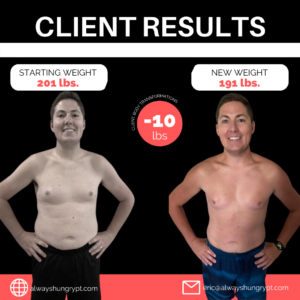
The workouts were quite challenging, pushing me harder than I initially prepared for but the results speak for themselves that it was a successful challenge. It was tough to not have Eric there in person since this is an online training program, so I had to navigate a few new things for myself, but Eric was quick to reply to any questions even providing video breakdowns of ways to make exercises work for me. This was something that had me on the fence about online training, but the reliability, quality, and knowledge Eric has and was able to pass along swatted away any doubts and helped make the workouts even more effective. I would highly recommend Eric’s online training service to friends, family, colleagues, anyone looking for similar goals. He was able to customize the program to my level of experience and the equipment I have available – heck, I even went on vacation and Eric was able to create workouts with the gym at the hotel I was staying at for one of our final weeks to keep me going!
He asked me for feedback on what was lacking, but I had already decided to sign up to keep working with him, so I’m sorry to say there wasn’t much lacking!
The 10lbs. lost was great, but I’m ready to take it even further and am confident Eric will help me reach my goals!
Ben’s achievements were a result of the effort he put in, which I would describe as exemplary. Working out, performing cardio, and eating well can be difficult, but with a guided plan and coach in your corner who wants you to win, is a recipe for success when you’re ready to make that change!
I’m so confident in the results Ben achieved (-10 lbs. in 8 weeks + tone/strength gain everywhere), that I’m sure it’s replicable and after a few tweaks, can be achieved in even less time! And that’s why I’m opening the challenge again!
I’m looking for 4 men or women who are tired of not seeing results and are ready to start the last program they’ll ever need to kickstart their journey. Stop saying “next time” and start saying, “right now!” with my 12 lbs. in 6 weeks Shred Challenge!
Not only will you lose weight, get strong, build muscle tone, but I’m SOOOO confident in this program that I’m willing to slap a MONEY BACK GUARANTEE onto this challenge. That’s right – sign up for the 6-week program, put in the work, and if you’re not satisfied with the results, I will put the money right back in your pocket! The only thing you have to lose is a few inches off your waist!
It won’t be easy, and you will have to work, but if you do, this will be the last “I’ll start tomorrow” you’ll ever have to say to yourself.
If you’re ready to make the change, Sign Up Here and we can get you going within the next 48hrs!
Stay Happy, Stay Healthy, Stay Hungry!
Thank you,
Eric Hinrichsen
Always Hungry Personal Training | Columbus, OH
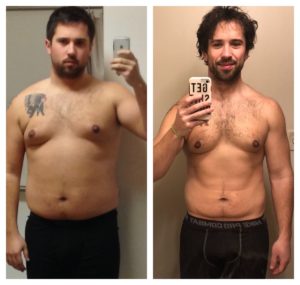
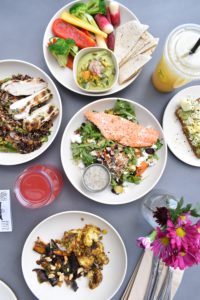 Whatever “diet” you’re trying to follow will ultimately fail if you don’t keep that in mind. As much as people like to complain about “change”, it’s really when we dial in a habit that we thrive the most. Life is difficult. Many of these diets are strict and difficult – making them super easy to slide off of and back into our old habits.
Whatever “diet” you’re trying to follow will ultimately fail if you don’t keep that in mind. As much as people like to complain about “change”, it’s really when we dial in a habit that we thrive the most. Life is difficult. Many of these diets are strict and difficult – making them super easy to slide off of and back into our old habits.
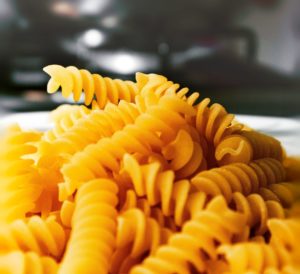 arded compared to protein. Carbohydrates should be more focused prior to a training session as they will help provide the energy needed to get through your training session.
arded compared to protein. Carbohydrates should be more focused prior to a training session as they will help provide the energy needed to get through your training session.